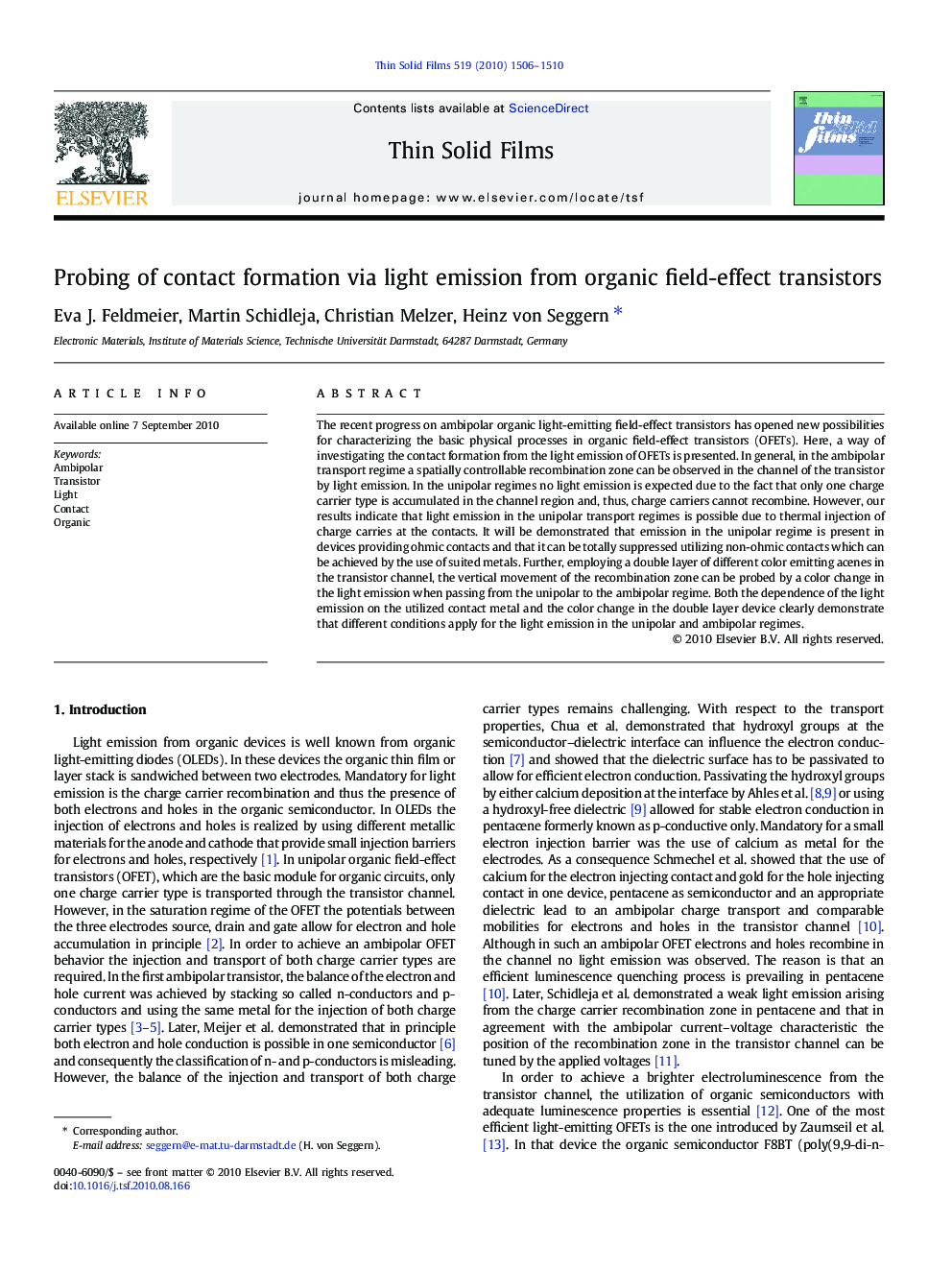| Article ID | Journal | Published Year | Pages | File Type |
|---|---|---|---|---|
| 1669766 | Thin Solid Films | 2010 | 5 Pages |
The recent progress on ambipolar organic light-emitting field-effect transistors has opened new possibilities for characterizing the basic physical processes in organic field-effect transistors (OFETs). Here, a way of investigating the contact formation from the light emission of OFETs is presented. In general, in the ambipolar transport regime a spatially controllable recombination zone can be observed in the channel of the transistor by light emission. In the unipolar regimes no light emission is expected due to the fact that only one charge carrier type is accumulated in the channel region and, thus, charge carriers cannot recombine. However, our results indicate that light emission in the unipolar transport regimes is possible due to thermal injection of charge carries at the contacts. It will be demonstrated that emission in the unipolar regime is present in devices providing ohmic contacts and that it can be totally suppressed utilizing non-ohmic contacts which can be achieved by the use of suited metals. Further, employing a double layer of different color emitting acenes in the transistor channel, the vertical movement of the recombination zone can be probed by a color change in the light emission when passing from the unipolar to the ambipolar regime. Both the dependence of the light emission on the utilized contact metal and the color change in the double layer device clearly demonstrate that different conditions apply for the light emission in the unipolar and ambipolar regimes.
